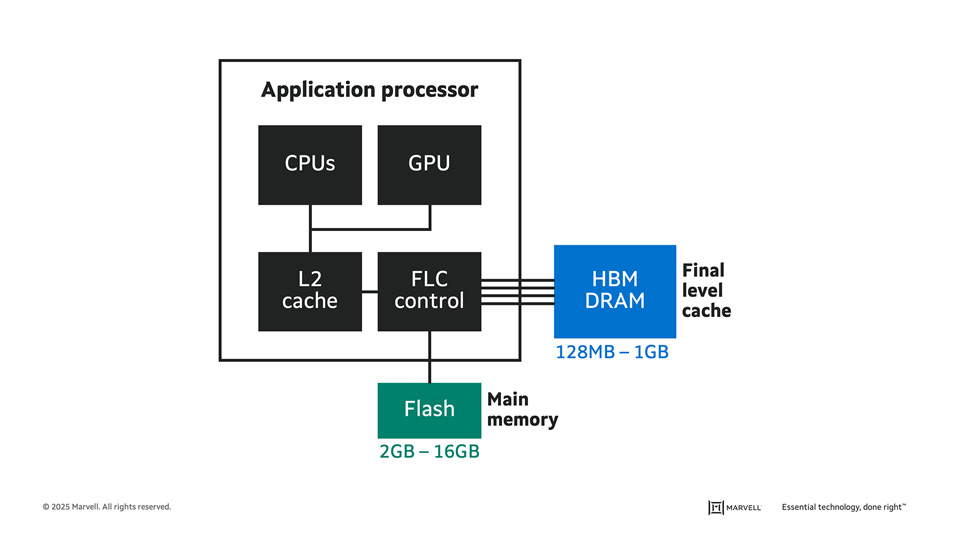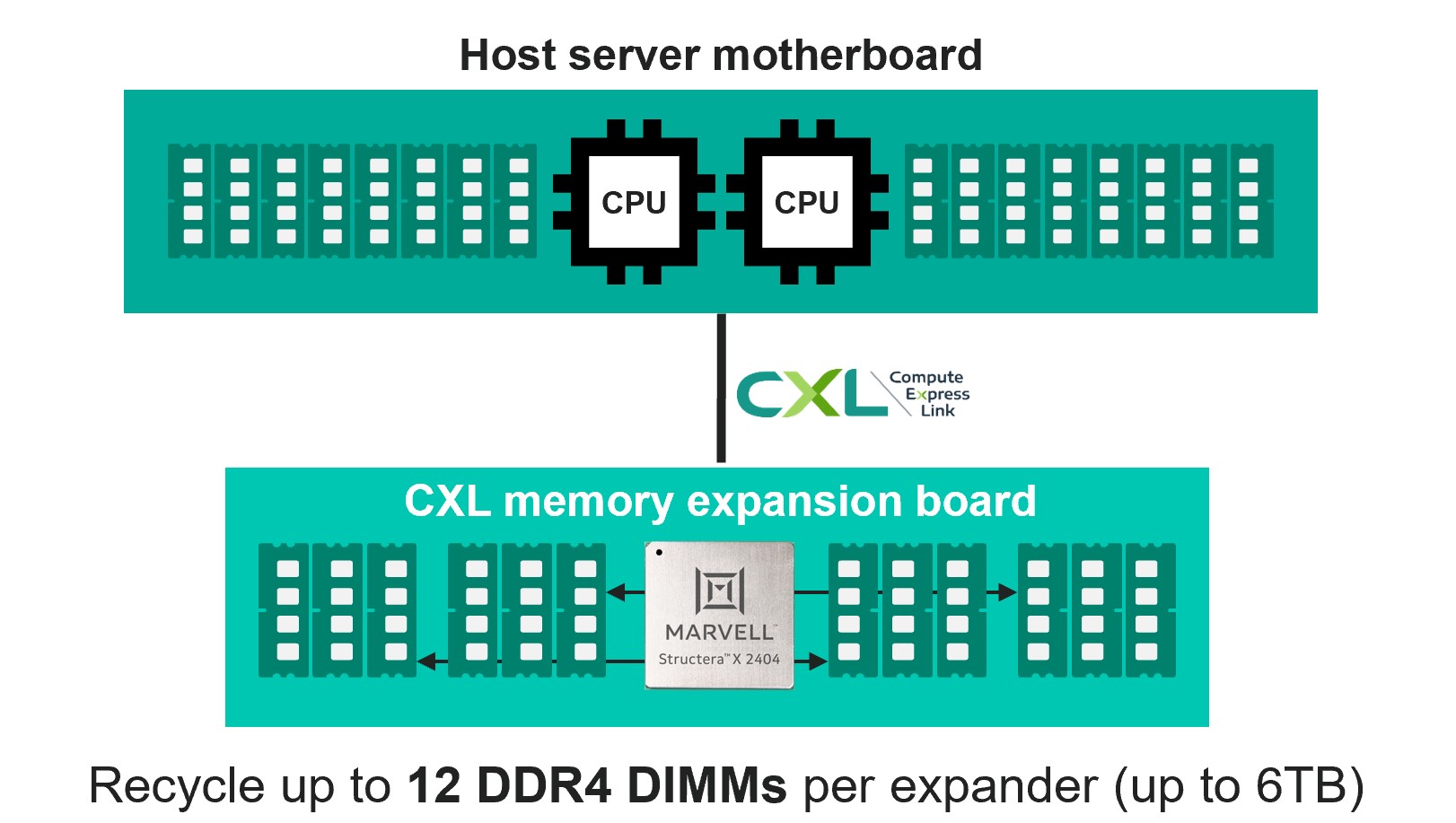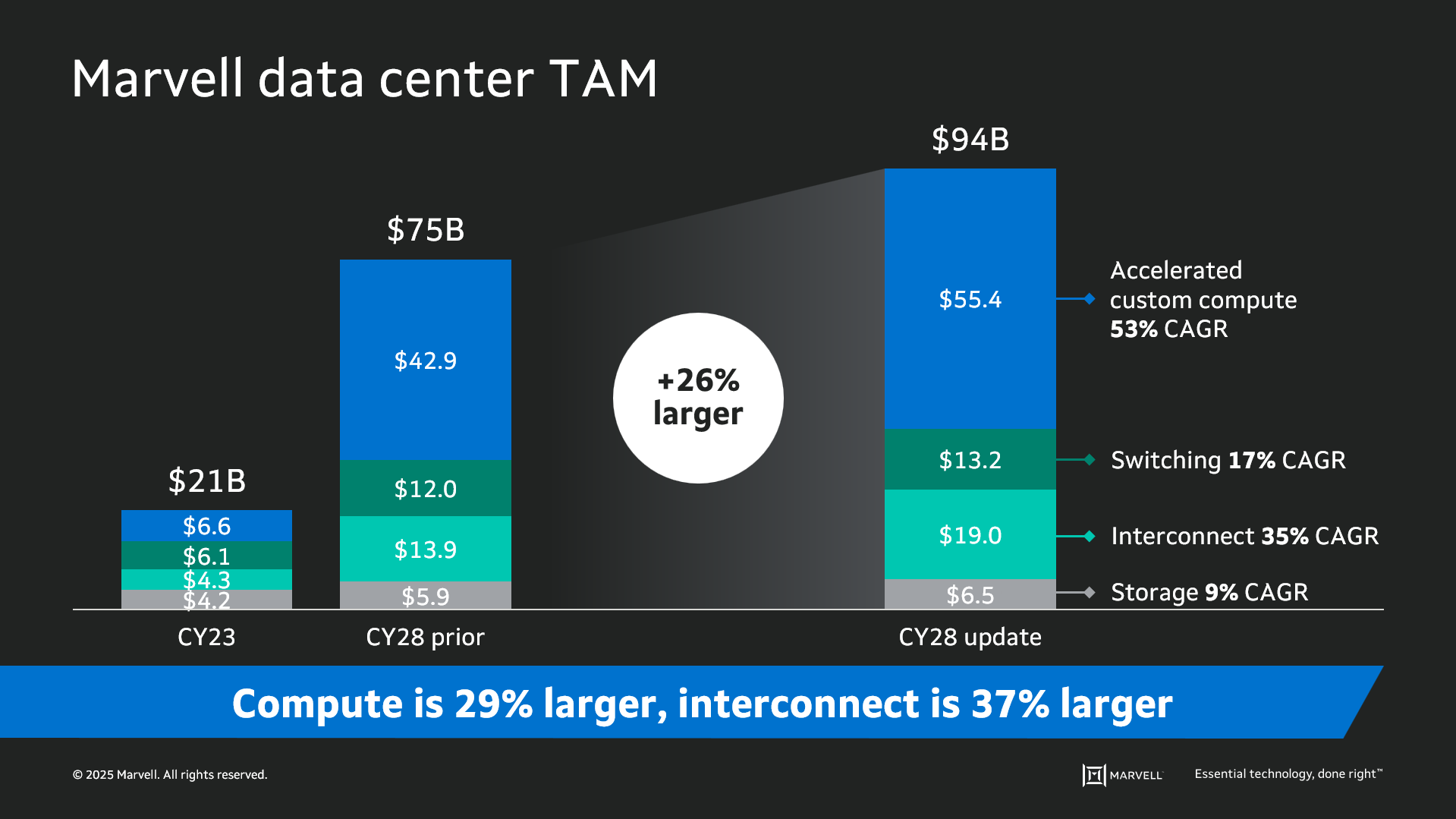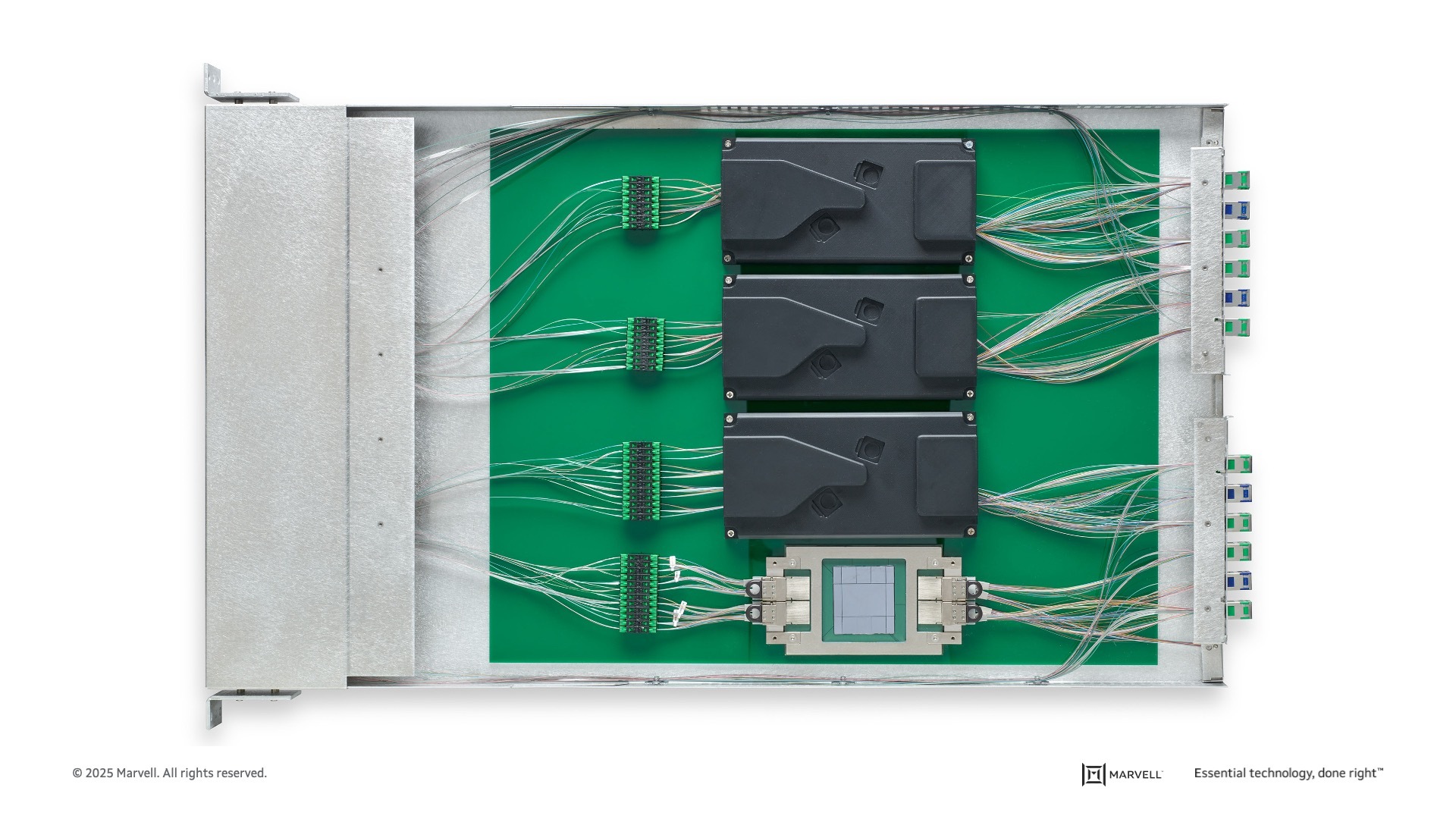

By Michael Kanellos, Head of Influencer Relations, Marvell
Chiplets—devices made up of smaller, specialized cores linked together to function like a unified device—have dramatically transformed semiconductors over the past decade. Here’s a quick overview of their history and where the design concept goes next.
1. Initially, they went by the name RAMP
In 2006, Dave Patterson, the storied professor of computer science at UC Berkeley, and his lab published a paper describing how semiconductors will shift from monolithic silicon to devices where different dies are connected and combined into a package that, to the rest of the system, acts like a single device.1
While the paper also coined the term chiplet, the Berkeley team preferred RAMP (Research Accelerator for Multiple Processors).
2. In Silicon Valley fashion, the early R&D took place in a garage
Marvell co-founder and former CEO Sehat Sutardja started experimenting with combining different chips into a unified package in the 2010s in his garage, according to journalist Junko Yoshida.2 In 2015, he unveiled the MoChi (Modular Chip) concept, often credited as the first commercial platform for chiplets, in a keynote at ISSCC in February 2015.3
The first products came out a few months later in October.
“The introduction of Marvell’s AP806 MoChi module is the first step in creating a new process that can change the way that the industry designs chips,” wrote Linley Gwennap in Microprocessor Report.4

An early MoChi concept combining CPUs, a GPU and a FLC (final level cache) controller for distributing data across flash and DRAM for optimizing power. Credit: Microprocessor Forum.
By Michael Kanellos, Head of Influencer Relations, Marvell
More customers, more devices, more technologies, and more performance—that, ultimately, is where custom silicon is headed. While Moore’s Law is still alive, customization is taking over fast as the engine for driving change, innovation and performance in data infrastructure. A growing universe of users and chip designers are embracing the trend and if you want to see what’s at the cutting edge of custom, the best chips to study are the compute devices for data centers, i.e. the XPUs, CPUs, and GPUs powering AI clusters and clouds. By 2028, custom computing devices are to account for $55 billion in revenue, or 25% of the market.1 Technologies developed for this segment will trickle down into others.
Here are three of the latest innovations from Marvell:
Multi-Die Packaging with RDL Interposers
Achieving performance and power gains by shrinking transistors is getting more difficult and expensive. “There has been a pretty pronounced slowing of Moore’s Law. For every technology generation we don’t get the doubling (of performance) that we used to get,” says Marvell’s Mark Kuemerle, Vice President of Technology, Custom Cloud Solutions. “Unfortunately, data centers don’t care. They need a way to increase performance every generation.”
Instead of shrinking transistors to get more of them into a finite space, chiplets effectively allow designers to stack cores on top of each other with the packaging serving as the vertical superstructure.
2.5D packaging, debuted by Marvell in May, increases the effective amount of compute silicon for a given space by 2.8 times.2 At the same time, the RDL interposer wires them in a more efficient manner. In conventional chiplets, a single interposer spans the floor space of the chips it connects as well as any area between them. If two computing cores are on opposite sides of a chiplet package, the interposer will cover the entire space.
Marvell® RDL interposers, by contrast, are form-fitted to individual computing die with six layers of interconnects managing the connections.

2.5D and multilayer packaging. With current manufacturing technologies, chips can achieve a maximum area of just over 800 sq. mm. By stacking them, the total number of transistors in an XY footprint can grow exponentially. Within these packages, RDL interposers are the elevator shafts, providing connectivity between and across layers in a space-efficient manner.
By Khurram Malik, Senior Director of Product Marketing, Marvell
As AI, cloud computing, and high-performance workloads continue to grow rapidly, data centers are accelerating their infrastructure upgrades. Central to this transformation is the migration to DDR5 memory, designed to meet the increasing demands for bandwidth and speed in servers.
This shift, however, comes with a significant challenge: millions of fully functional DDR4 memory modules, the dominant memory inside today’s servers, could be retired prematurely. This is not because of a performance failure. DDR4 memory modules can operate for a decade or longer. Instead, it is because the latest generation of server CPUs only support DDR5 memory. Put another way, when hyperscalers replace their current servers with DDR5 modules over the coming years, they will be potentially throwing away billions of GBs of fully functional DDR4 memory if they can’t find ways to use them.
The result is a looming e-waste problem and an environmental impact that cannot be ignored. Up to 66 billion kilograms of CO₂ emissions—approximately the same amount that would be generated by 168 billion miles of driving1-- and thousands of tons of e-waste can be avoided by giving DDR4 a second life. Marvell® CXL Structera™ X presents a powerful solution by extending the life of DDR4 memory, enabling data centers to reuse these existing assets, reduce capital expenditures, and minimize their carbon footprint—all while improving the performance footprint of their infrastructure.
Marvell CXL Structera X: A Pathway for More Memory
Released last year, Marvell Structera CXL devices effectively allow cloud operators and system designers to add extra memory, memory bandwidth, and/or computing cores to servers by transforming an open PCIe interface into a memory channel. A first-of-its kind device, the Structera A memory accelerator provides a path for adding up to 16 server CPU cores, 200Gb of memory bandwidth and 4TB of memory for offloading the processing of deep learning recommendation models (DLRM) and other tasks for CPUs.
Structera X, meanwhile, focuses on maximizing capacity. A single Structera X 2404 is capable of supporting up to 12 DDR4 additional DIMMs, or 6TB memory capacity without compression, or up to 12TB with LZ4 inline compression in a single one- or two-processor server. It is also the first CXL device to be compatible with both DDR4 or DDR5. As a result, Structera X becomes a conduit for recycling DDR4. The diagram shows more:

Financially, reusing memory is a boon. July 2025 spot prices for 96GB DIMMs of DDR5 memory range from $458 to $488.2 Repurposing TBs of otherwise-to-be-discarded DDR4 instead of buying new DDR5 means thousands of dollars saved per CXL-enhanced server.
By Michael Kanellos, Head of Influencer Relations, Marvell
The opportunity for custom silicon isn’t just getting larger – it’s becoming more diverse.
At the Custom AI Investor Event, Marvell executives outlined how the push to advance accelerated infrastructure is driving surging demand for custom silicon – reshaping the customer base, product categories and underlying technologies. (Here is a link to the recording and presentation slides.)
Data infrastructure spending is now slated to surpass $1 trillion by 20281 with the Marvell total addressable market (TAM) for data center semiconductors rising to $94 billion by then, 26% larger than the year before. Of that total, $55.4 billion revolves around custom devices for accelerated compute1. In fact, the forecast for every major product segment has risen in the past year, underscoring the growing momentum behind custom silicon.

The deeper you go into the numbers, the more compelling the story becomes. The custom market is evolving into two distinct elements: the XPU segment, focused on optimized CPUs and accelerators, and the XPU attach segment that includes PCIe retimers, co-processors, CPO components, CXL controllers and other devices that serve to increase the utilization and performance of the entire system. Meanwhile, the TAM for custom XPUs is expected to reach $40.8 billion by 2028, growing at a 47% CAGR1.
By Nizar Rida, Vice President of Engineering and Country Manager, Marvell Canada
This blog first appeared in The Future Economy
AI has the potential to transform the way we live. But for AI to become sustainable and pervasive, we also have to transform our computing infrastructure.
The world’s existing technologies, simply put, weren’t designed for the data-intensive, highly parallel computing problems that AI serves up. As a result, AI clusters and data centers aren’t nearly as efficient or elegant as they could be: in many ways, it’s brute force computing. Power1 and water2 consumption in data centers are growing dramatically and many communities around the world are pushing back on plans to expand data infrastructure.3
Canada can and will play a leading role in overcoming these hurdles. Data center expansion is already underway. Data centers currently account for around 1GW, or 1%, of Canada’s electricity capacity. If all of the projects in review today get approved, that total could grow to 15GW, or enough to power 70% of the homes in the country.4
Like in other regions, data center operators are exploring ways to increase their use of renewables and nuclear in these new facilities along with ambient cooling to reduce their carbon footprint of their facilities. In Alberta, some companies are also exploring adding carbon capture to the design of data centers powered by natural gas. To date, carbon capture has not lived up to its promise.5 Most carbon capture experiments, however, have been coupled with large-scale industrial plants. It may be worth examining if carbon capture—combined with mineralization for long-term storage—can work on this smaller scale. If it does, the technology could be exported to other regions.
Fixing facilities, however, is only part of the equation. AI requires a fundamental overhaul in the systems and components that make up our networks.

Above: The server of the future. The four AI processors connect to networks through four 6.4T light engines, the four smaller chips on the east-west side of the exposed processor. Coupling optical technology with the processor lowers power per bit while increasing bandwidth.